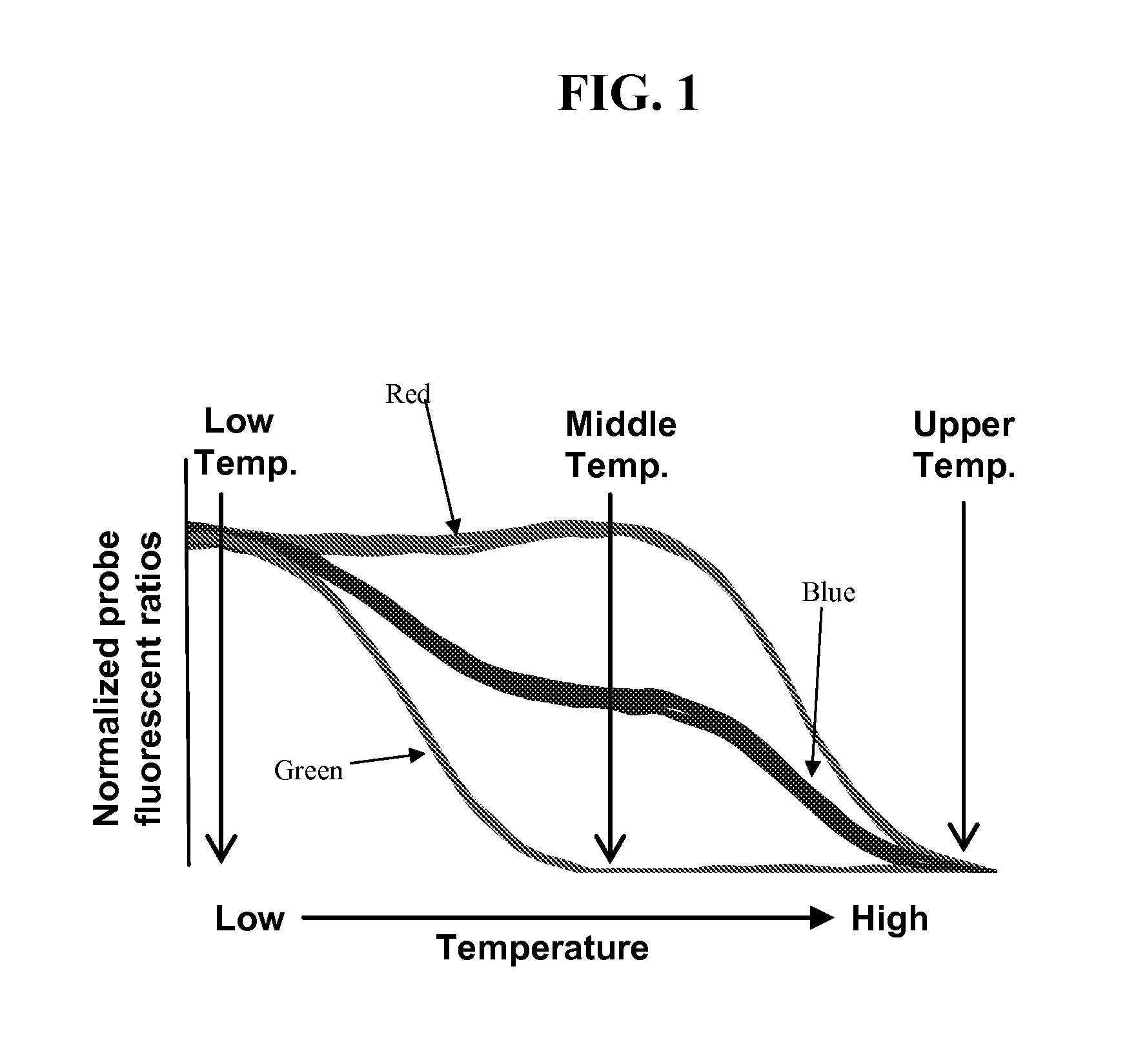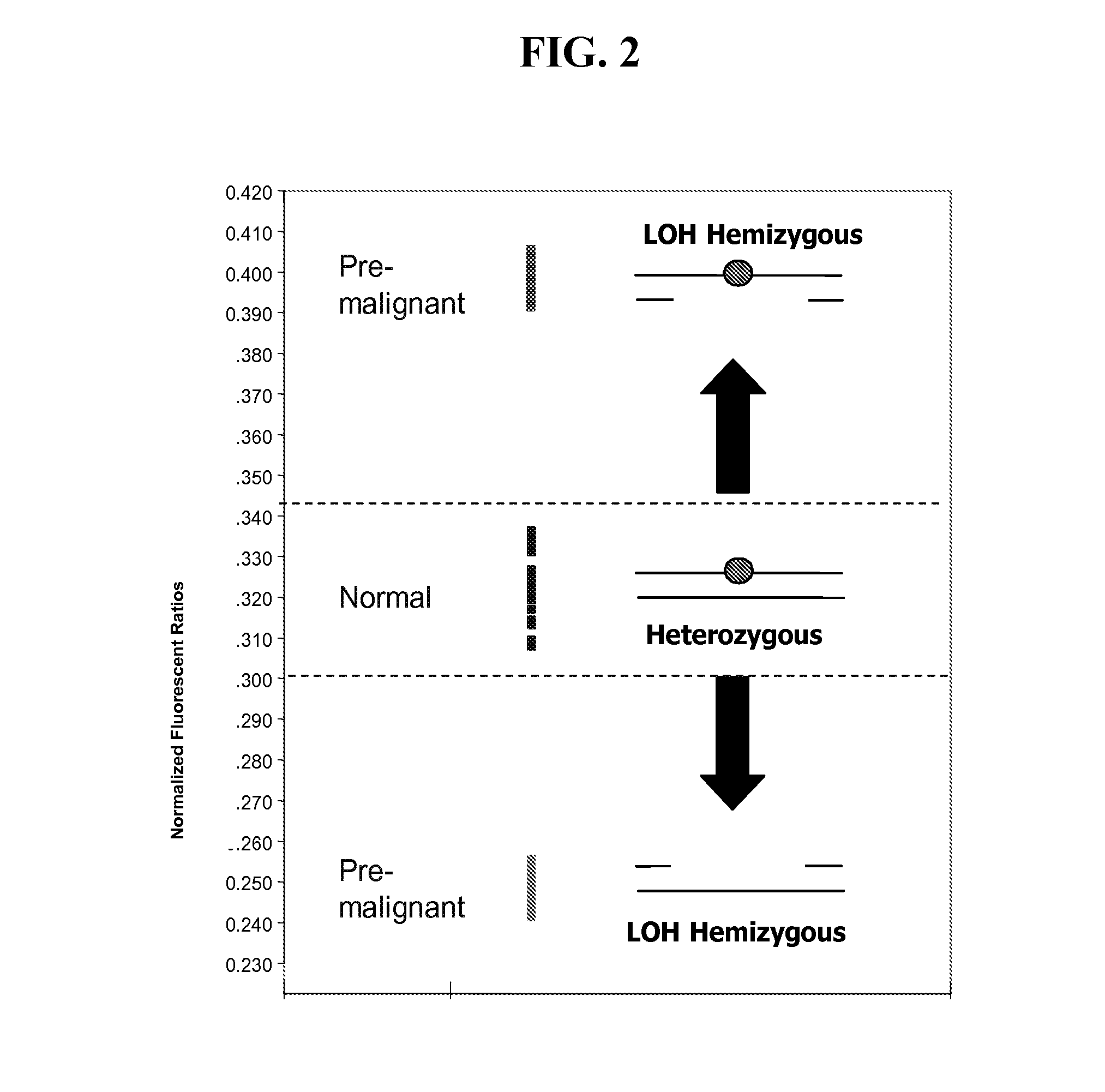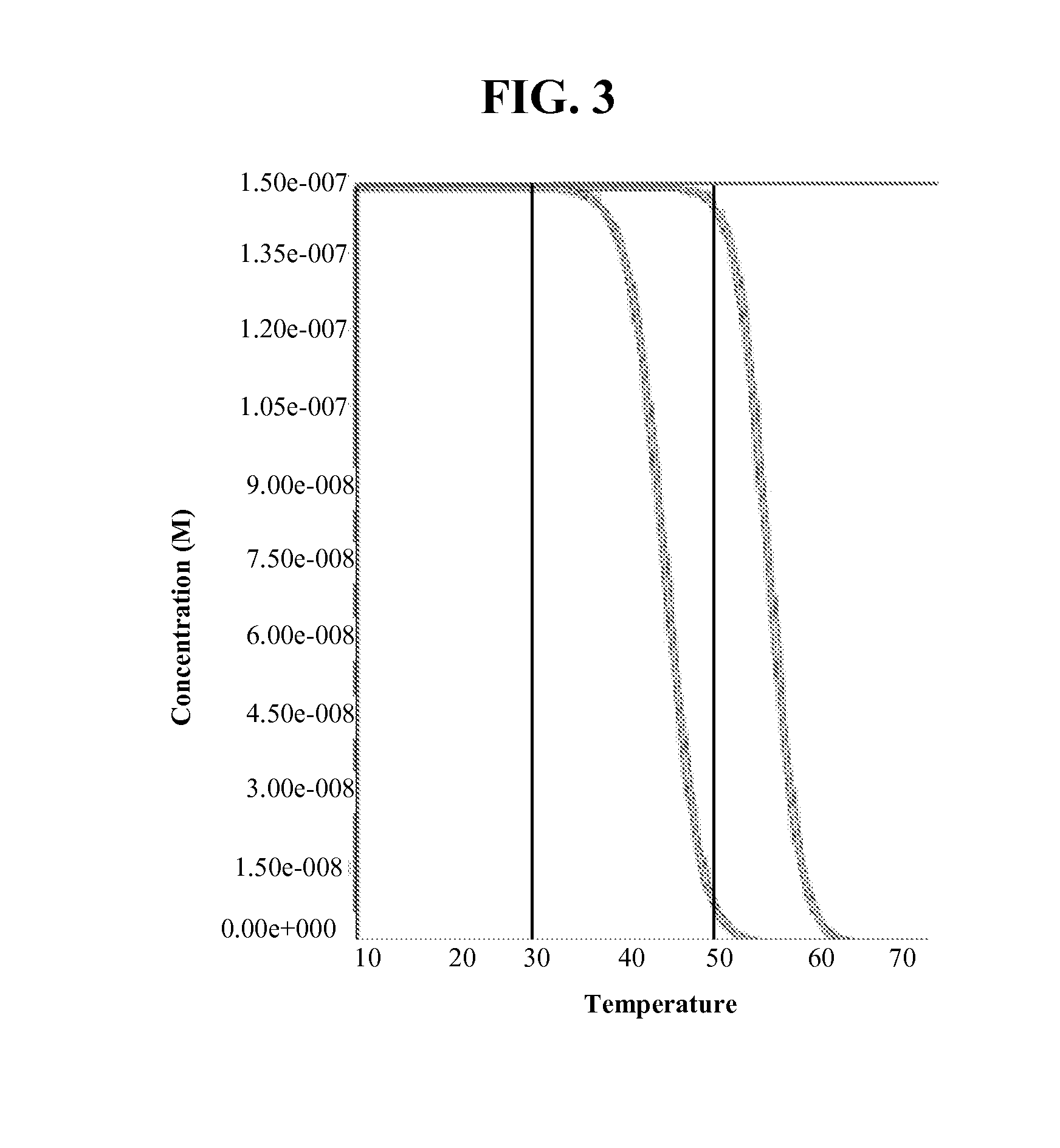Compositions and methods for nucleic acid based diagnostic assays
a nucleic acid and diagnostic assay technology, applied in the field of nucleic acid based diagnostic assays, can solve the problems of insufficient information, inaccuracy and/or inefficiency of existing nucleic acid molecules, and inability to provide accurate, fast, cost-effective information
- Summary
- Abstract
- Description
- Claims
- Application Information
AI Technical Summary
Benefits of technology
Problems solved by technology
Method used
Image
Examples
example 1
Protocol for the Design of Mismatch-Tolerant Probes for LATE-PCR Endpoint SNP Genotyping
[0084]This Example described an exemplary protocol for design of LATE-PCR probes for genotyping single nucleotide polymorphisms (SNPs). This protocol can be implemented via computer program with one or more steps conducted in an automated fashion.[0085]a) Obtain information for the SNP sites in the chromosomal regions of interest from the dbSNP database at Pubmed[0086]b) Make sure that the SNP site is indeed in the chromosome of interest (See Integrated Maps section in the dbSNP database)[0087]2) Transfer the FASTA DNA sequence flanking both sides of the SNP from dbSNP database to Word
[0088]Clean up sequence in Word by replacing all the white spaces and paragraph marks with empty spaces.[0089]3) Get the sequence for the DNA strand that corresponds to the excess primer strand generated by LATE-PCR. This is the strand that will be bound by the mismatch-tolerant probe.[0090]a) If LATE-PCR primers ar...
example 2
Validation of Design Criteria (1): Optimization of LATE-PCR Endpoint Assays for LOH Detection in Samples Containing Mixtures of Neoplastic and Normal Cells
[0180]Detection of LOH genomes can be confounded by the presence of normal diploid genomes from surrounding stromal tissue. To evaluate the resolving power of LATE-PCR endpoint LOH assays for different probe design criteria, artificially constructed mixtures of DNA homozygous for rs858521 SNP (C / G alleles) or the rs4233018 SNP site (A / G alleles), which resulted in different proportions of the SNP alleles were analyzed. The rs858521 probe was not designed to meet the optimal design criteria described above while the rs4233018 was (e.g., only the rs4322018 probe hybridizes to close to 100% of the perfectly matched targets and 0% of the mismatch targets at the mid-temperature while still hybridizing to both target sequences at the low temperature, see FIGS. 4A and 4B). These SNP sites are located in the vicinity of the TP53 tumor sup...
example 3
Non-Amplifiable Control Targets
Pre-PCR Steps
[0182]1. The non-amplifiable control oligonucleotides are added to each sample prior to amplification at the lowest concentration that reliably generates fluorescent ratios. The goal is to prevent the control fluorescent signals from overwhelming the fluorescent signals from the PCR products at the end of the reaction. Control experiments showed that 50 nM of each non-amplifiable control oligonucleotides (the same concentration as the typical limiting primer concentration in LATE-PCR) works well.[0183]a. In addition to the non-amplifiable control targets, the PCR samples contain 1×PCR buffer, MgCl2, dNTP, primers, probe (500 nM), genomic DNA, and Primesafe (a reagent that prevents primer dimer formation during collection of fluorescent signals from the probe-internal control hybrids at three different temperatures).[0184]2. As shown in FIG. 7, prior to PCR amplification the sample with the control oligonucleotides was first heated to at le...
PUM
| Property | Measurement | Unit |
|---|---|---|
| Fraction | aaaaa | aaaaa |
| Fraction | aaaaa | aaaaa |
| Ratio | aaaaa | aaaaa |
Abstract
Description
Claims
Application Information
 Login to View More
Login to View More - R&D
- Intellectual Property
- Life Sciences
- Materials
- Tech Scout
- Unparalleled Data Quality
- Higher Quality Content
- 60% Fewer Hallucinations
Browse by: Latest US Patents, China's latest patents, Technical Efficacy Thesaurus, Application Domain, Technology Topic, Popular Technical Reports.
© 2025 PatSnap. All rights reserved.Legal|Privacy policy|Modern Slavery Act Transparency Statement|Sitemap|About US| Contact US: help@patsnap.com



